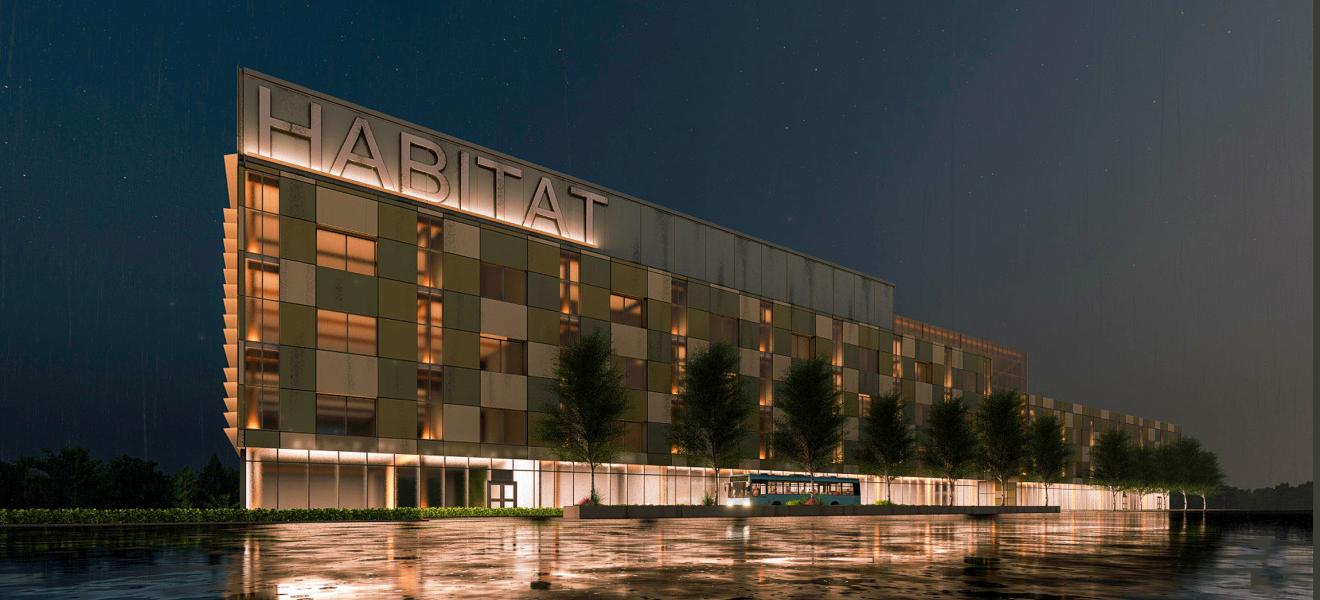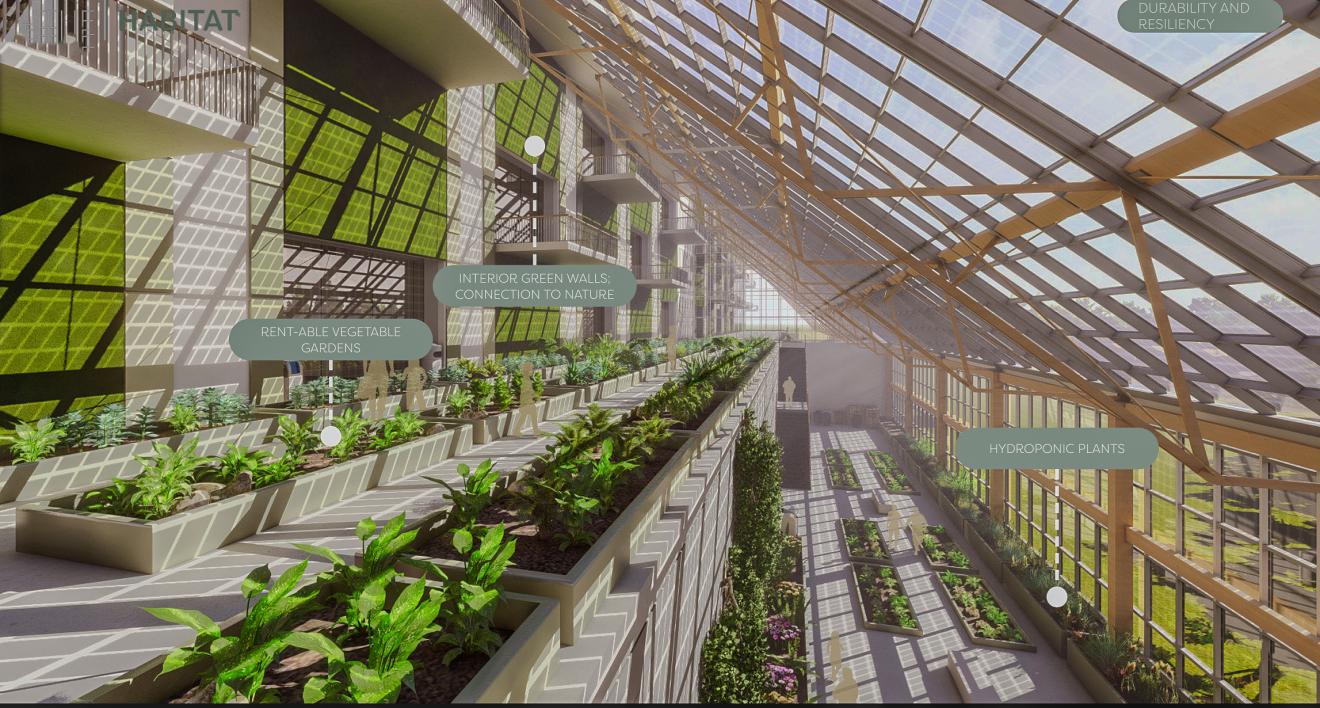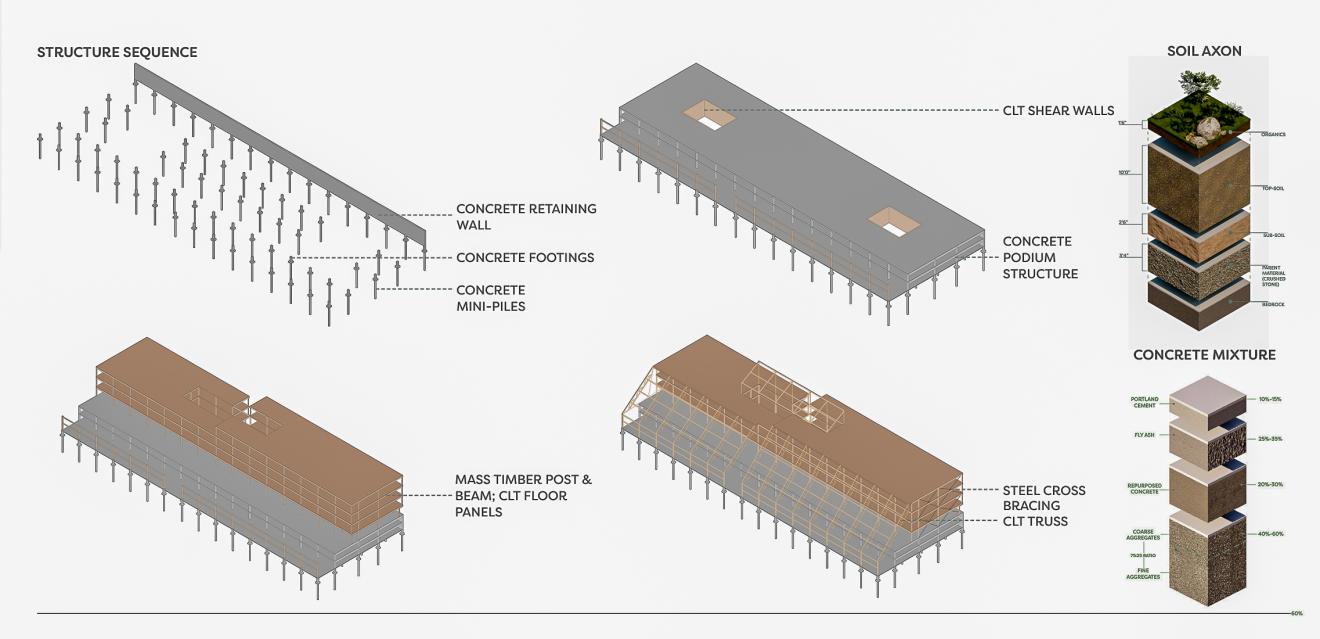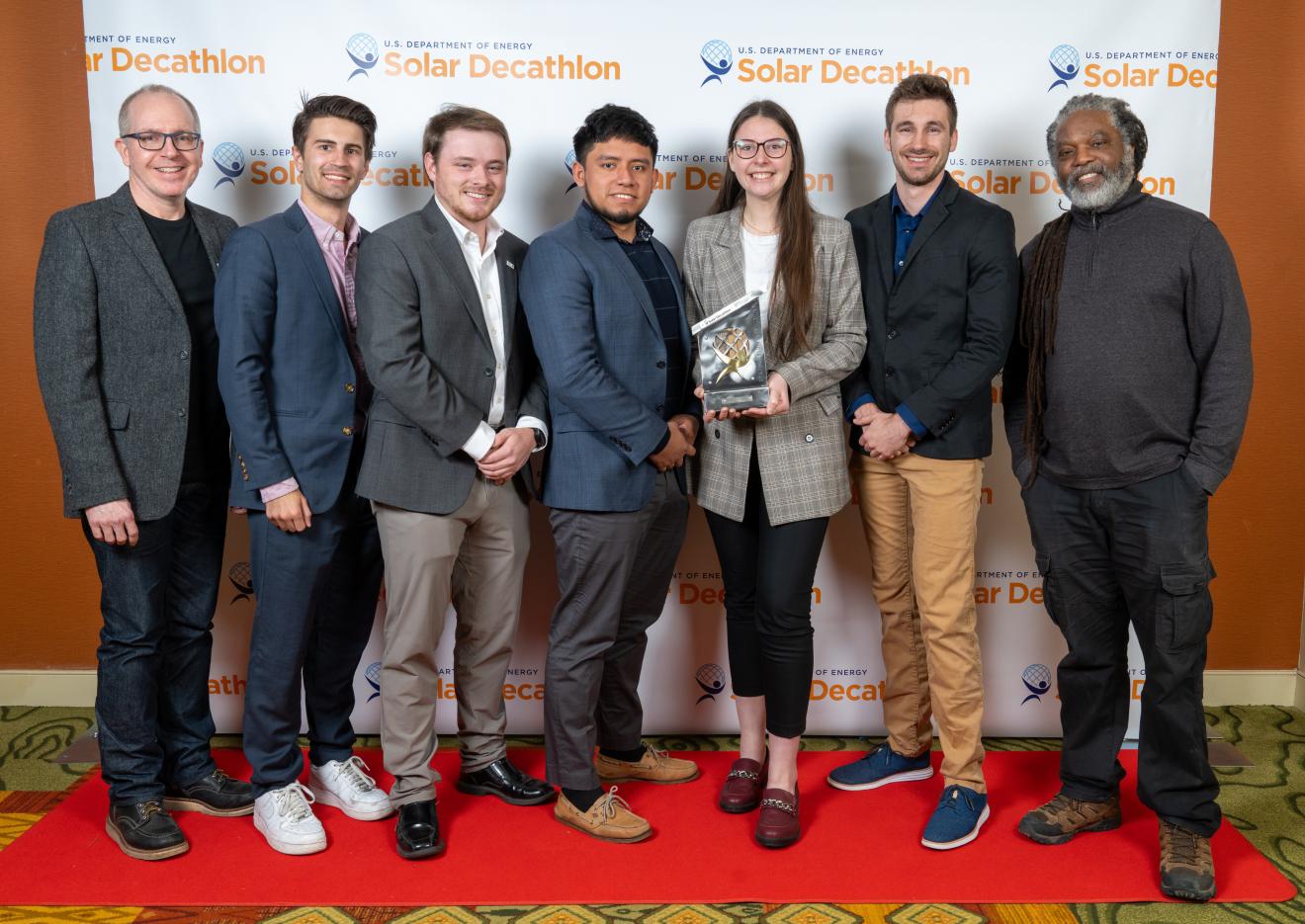Sustainable Design Success: Wentworth Team’s Solar Decathlon Triumph

A nighttime rendering of The Habitat by Wentworth Architecture students
As the Summer 2024 term comes to a close at Wentworth Institute of Technology, we look back at a team of six Architecture students who achieved outstanding success in the U.S. Department of Energy's Solar Decathlon Design Challenge.
Competing in the Office Division, the student team consisting of Evan Clark, Jess Clavet, Matt Kleckowski, Hilcias De La Cruz, Nate Kalinyak, and Ray Lu presented their project, "The Habitat," at the National Renewable Energy Laboratory in Colorado.
The team secured first place in their division and ranked among the top three overall in the competition, underscoring Wentworth's commitment to sustainable design excellence.
[Read about Solar Decathlon team Nest Zero at this link and even more at our Wentworth Sustainability page]

“The Habitat is a mixed-use office building, located along the Charles River in Watertown, Massachusetts, that fully embraces its name through its many resilient landscape and building strategies,” said Clark.
According to the group’s project summary, The Habitat “reaches beyond the site’s borders to combat issues such as climate change and the decline of local ecosystems. We have strived to create a design that takes into account not only the users of the building but all of the community’s stakeholders. Our team, faculty advisors, and industry partner, New England Development, envision a place that is resilient for the present as well as the future, energy efficient, and a place people desire.”
The site is the former home to a grocery store.
The student project aimed to create a near carbon-neutral building, as well as future-proof the site. The group achieved this by combining passive and active design strategies, starting with a mass timber structure.

Located near the Charles River, the site features water surge challenges, which the team addressed by incorporating a rain garden and a rainwater collection system. The building's optimized form maximizes solar gain, renewable energy use, and integrates interior vegetation.
Architecture and engineering expertise were needed for the project that includes:
- A farmer’s market and greenhouse along the southern facade, which provide vegetation and purified air to occupants of the building
- Materials from the existing building sorted and recycled on site
- Bike storage and pollinators
- An interior atrium that brings in natural sunlight and acts as stacked ventilation, redistributing rising air back into the penthouse area
- A geothermal heat pump and solar photo-voltaic panels
The team additionally conducted a market analysis, considering demographics in the area, and the site’s proximity to both Boston and a neighboring greenway.
Aiding the team were Wentworth faculty advisors Troy Peters and Nj Unaka, and industry partners Jim Fischer, Carolina Magina, and Chase Cote.
Find the team’s pitch video—including a walkthrough of The Habitat—below.

